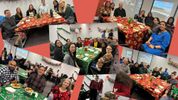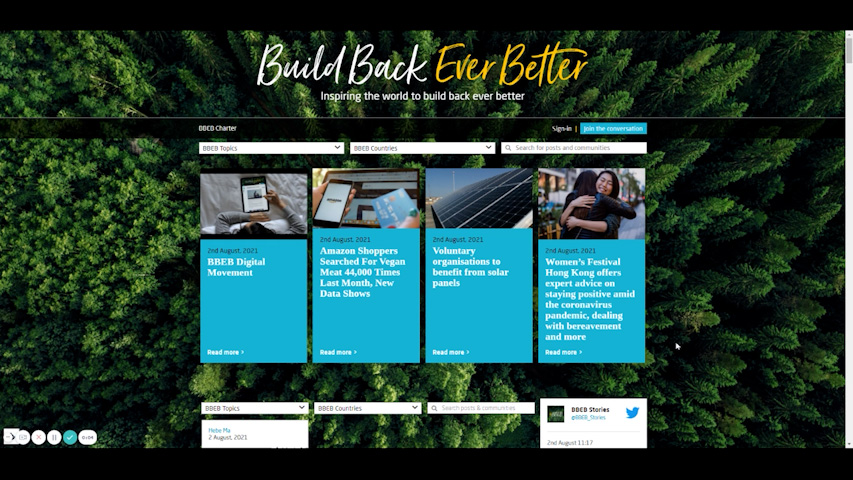Even in the modern age, where an online opinion on celebrity behaviour can attract responses equivalent in number to a medium-sized town, climate change denial now appears to be a minority sport.
However, looking at where the debate is now polarised, the argument appears to have shifted on to what constitutes an appropriate response to this genuinely global crisis. What is the balance that needs to be struck between the urgency of the requirement to act and the disruption to businesses, the global economy and the general public? How much burden should current generations be expected to bear so that some quality of life remains for those to come? When there are even more immediate geo-political, financial and human concerns what solutions should we forego because of the prospect of future suffering?
There is broad agreement on some key points. Food production is both a victim of and contributor to climate change. The world’s population will reach between nine and ten billion by 2050 and scaling up food production sufficiently to feed our greater population, using our current system, is not viable if we are to meet the agreed climate change targets. More of the same is not an answer…so what is?
Over the last three years, reports from the IPCC, WHO and FAO have suggested that a combination of a revised approach to agriculture, optimising the advantages in biotechnology and changing consumer behaviour will be required if we are to provide future food security while reducing the impact of food production on climate change. The exact combination of these three approaches would be determined by a regional assessment of how the most sustainable system could be implemented in the local food environment. This general conclusion acknowledged that there was no ‘one-size-fits-all’ solution to a crisis where the impact in different regions varied so widely.
One of the technologies supporting changes in agricultural methods is that of Indoor Vertical Farming. The term ‘vertical farm’ is used in connection with techniques involving crops grown in stacked layers, where the height allows the production per unit area to be maximised. It usually refers to growing operations that are in enclosed buildings, with artificial lighting and requiring precise irrigation, temperature, and humidity controls.
This week, in the interests of professional understanding (and my own self-confessed science geek curiosity), I accompanied my SAI colleagues to an open day at one such vertical farm in rural Berkshire. The open day was hosted by the Innovation Agri-Tech Group (IAG) to celebrate the launch of their new GrowFrame™ 360 system and gave attendees an opportunity to look behind the scenes at how crops are grown and harvested using this technique.
The IAG technology uses aeroponics (whereby the air-exposed roots of the plant are intermittently sprayed with a fine, high-pressure mist of water containing nutrient-rich solutions) as opposed to hydroponics (where the roots are submerged in nutrient solutions) or aquaponics (which couples hydroponics with aquaculture to mimic a natural closed loop system). The production environment is controlled by a team of scientists using Artificial Intelligence to detect (and correct) minute changes in temperature, humidity, light etc. to optimise crop growth and quality.
The technology is undoubtedly impressive, as is the level of control on the site and the expertise available to support. The claims on lower environmental impact are also easy to understand and to justify. For instance, water use in traditional agriculture is significant and a major contributor to its environmental impact. Using aeroponics, water not absorbed by the plants’ roots is simply recycled through the growing system (rather than evaporating, draining away or getting soaked up by soil), leading to a claimed 95% reduction in water use. The controlled environment in the growing area also means that no pesticide use is required, and crops can be grown 365 days a year. Protection from extreme weather events means that less crop is lost and the consistency in quality is easier to maintain. The potential for local crop production that reduces associated food miles is also a consideration.
So, it would appear that we have a technology that allows quality and safety control of key crops in a way that significantly reduces the impact of production on the environment. Is it as simple as just replicating the AIG system times over, exporting it across the globe and waiting for the global temperature to drop? Sadly, no. As with any technology there needs to be full understanding of any limitations and associated risks.
Let’s consider: Can the system be scaled up while still maintaining the same level of environmental advantage (controlled environments require a lot of electricity to maintain)? Can a system created, managed and maintained by science professionals be managed as efficiently and safely by employees with a non-science background (as might well be required in any larger or wider scale operation)? What are the limits to which crops can be efficiently grown? Are these the crops we need for improved food security? Can crops produced using what might be considered a novel technique prove their compliance with the key requirements of safety, honesty with the consumer and nutritional equivalence? I would also consider the recycling of water, the lack of natural light and the lack of competitive microflora to be potential microbiological risks requiring regular due diligence monitoring.
These are not criticisms, simply potential risks that should be fully considered and controlled (as anyone involved in the world of alternative proteins knows only too well). To IAG’s credit, they have considered the issues and collect significant data in support of their claims of product quality and safety. They have also signed up to the Red Tractor certification scheme where they are being advised and supported by colleagues from SAI. This determination to be held to the same standards as traditional agriculture in order to demonstrate the belief in their technology is commendable. Equally admirable is the business’ intention to make the technology affordable for individual use in developing countries. The pillar of affordability is one that is often forgotten when use of the word ‘sustainable’ is used in conjunction with food production.
Vertical Farming is not in itself an answer – as we know, no one proposed solution can be. The issues and impacts of climate change are too broad, too varied and often too unpredictable to allow us the luxury of a universal panacea. However, it is surely part of a holistic solution that can be applied in food environments where it can support local food and nutritional security.
COP 27 begins in 14 days’ time, and the positives in VF are to be welcomed as the tough questions begin to be asked.
The indoor farming market is now growing at 27-30% annually and is predicted to reach $6.31 billion by 2022. Major players like Google, IKEA and the Sheikh of Dubai have all invested tens of millions of dollars in this space
 unknownx500
unknownx500


/Passle/5e4a7839abdfeb03584d01f6/SearchServiceImages/2025-11-05-18-02-41-097-690b9141f758a37a12ec9e49.jpg)
/Passle/5e4a7839abdfeb03584d01f6/MediaLibrary/Images/2025-05-08-15-28-28-737-681ccd9cc61a043756f8e003.png)
/Passle/5e4a7839abdfeb03584d01f6/MediaLibrary/Images/2025-02-25-00-03-50-854-67bd08e6a974b8c116a27c09.png)
/Passle/5e4a7839abdfeb03584d01f6/MediaLibrary/Images/2025-03-05-18-20-32-197-67c895f02c0314a9f74af628.png)










